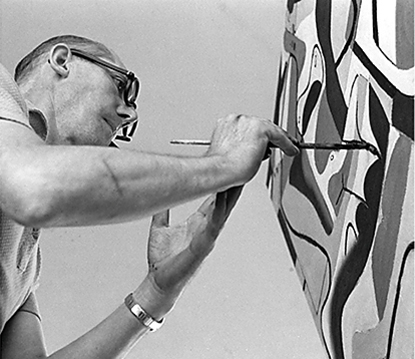Born in 1887 in La Chaux-de-Fonds, Switzerland, as Charles-Edouard Jeanneret-Gris, Le Corbusier, as he was later known, was obsessed with drawing at an early age. At the school of applied arts, he made rapid progress on his path to becoming a painter. His teacher aroused in him a passion for architecture as well, and secured the 17-year-old his first commission.
Propelled by a drive towards greatness, he soon found his birthplace to be too restrictive. In 1917, he settled in Paris, where starting in 1918 he developed the new movement known as Purism out of what was at that time late Cubism. As an artist, he belonged to the vanguard of the avant-garde and was soon exhibiting at the gallery of Léonce Rosenberg, the dealer of the likes of Picasso, Braque, and Léger.
In 1920, he became one of the founders of the journal L’Esprit Nouveau, which was devoted to the developments in art and the sciences. He signed his unusually daring and succinctly worded essays on architecture with the pseudonym: Le Corbusier. These writings were published in 1923 in the anthology Vers une Architecture, using a revolutionary design by the artist. The book made him world famous – Le Corbusier’s ascent to the throne of immortality in architecture had begun.
Up to the time of his death in the Mediterranean at Roquebrune-Cap-Martin on the French Riviera, in 1965, he was building on five continents and constantly recreating himself. Time Magazine counted him among the 100 most influential personalities of the twentieth century and hailed him as the most important architect of all, seventeen of his buildings are on the list of UNESCO World Heritage Sites.
As an architect he was a path breaker for Modernism – as an urbanist and author a guarantee for furor – as a designer the creator of timeless fauteuils – and as an artist the originator of works that are now worth millions…How did Le Corbusier manage to do all this? How to explain the phenomenal productivity of this person crazy with the urge to create?
He gained strength and inspiration from his art: for decades he devoted every morning to his artwork. Art was “the key to my existence,” he repeatedly emphasized. About 500 oil paintings, thousands of drawings, hundreds of graphics, and countless tapestries, sculptures, and enamel works bear witness to this. He lived by “that which is the most important value in life”: by all that is poetic, by “the creation of the spirit.”
T. Rabara

Le Corbusier in 1937 while working
on the painting “Plougrescant”.
© akg-images / Paul Almasy;
FLC / 2019, ProLitteris, Zurich


